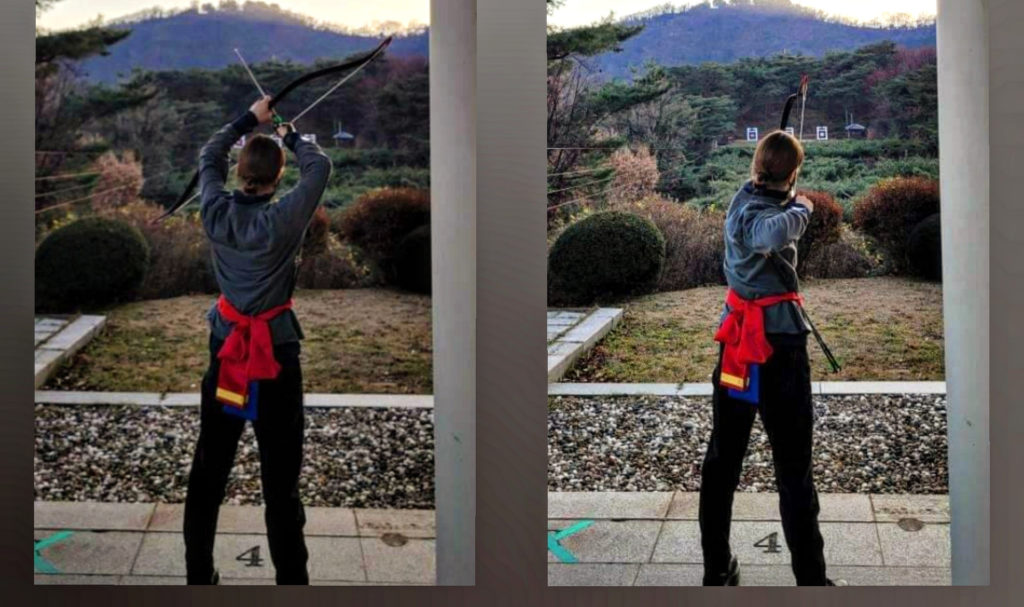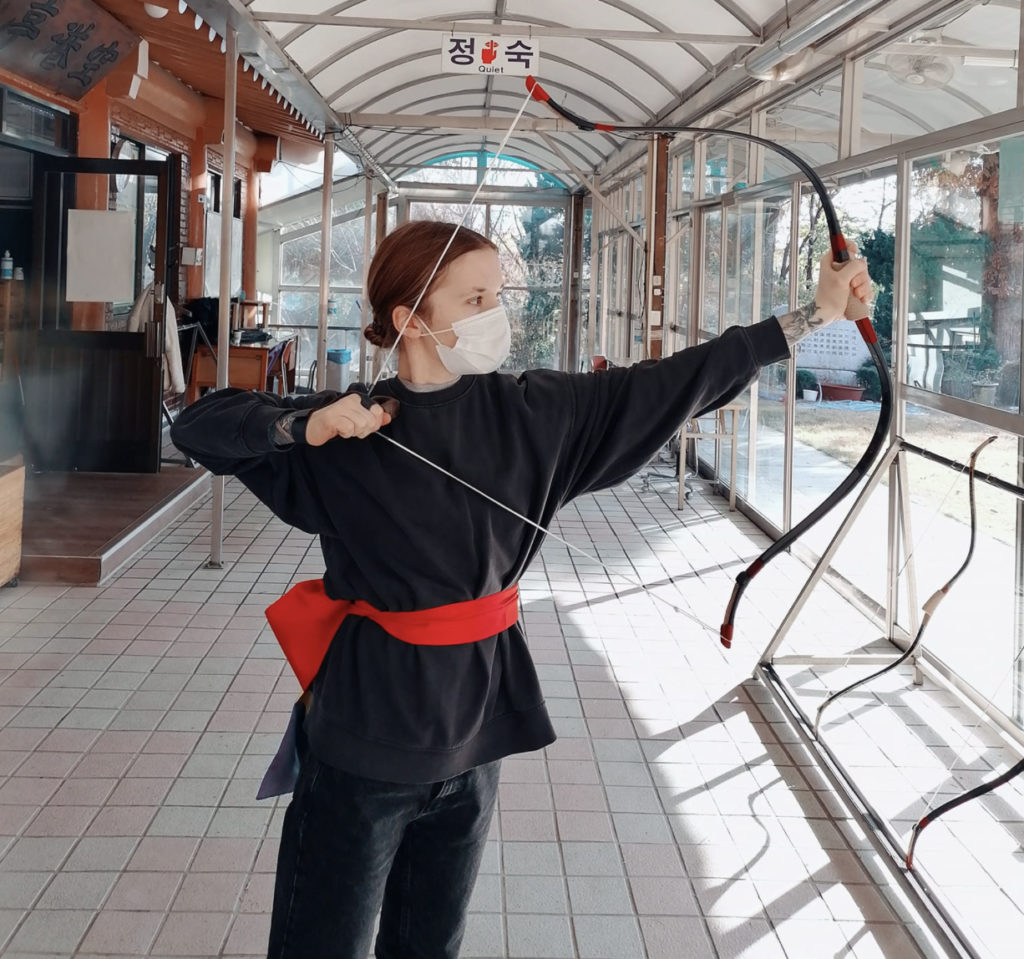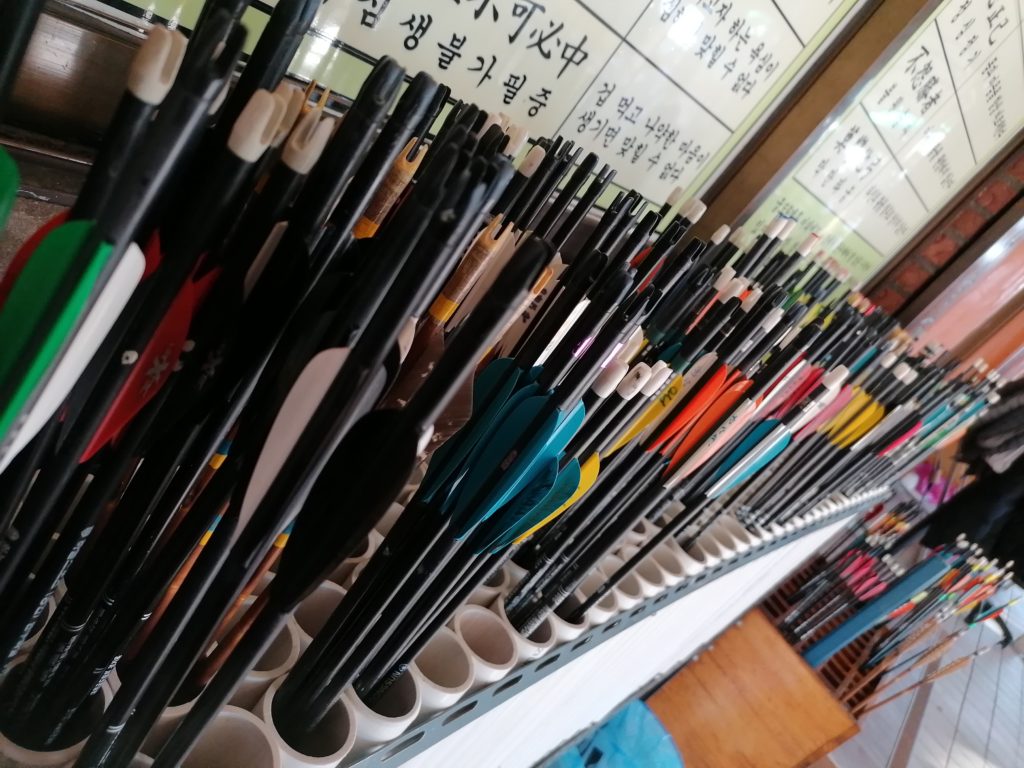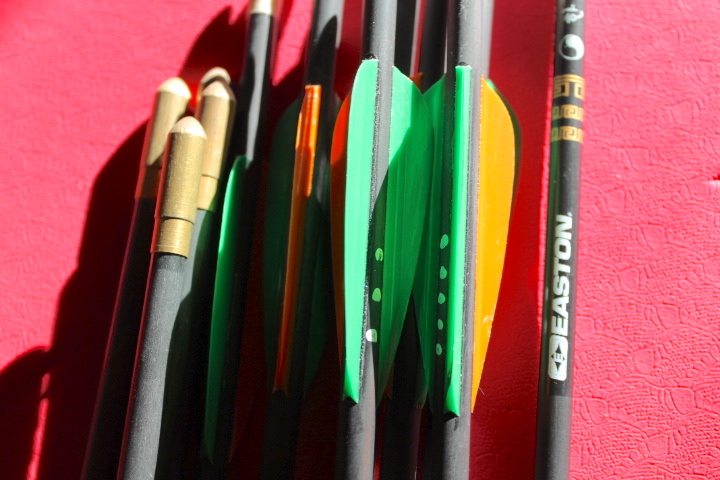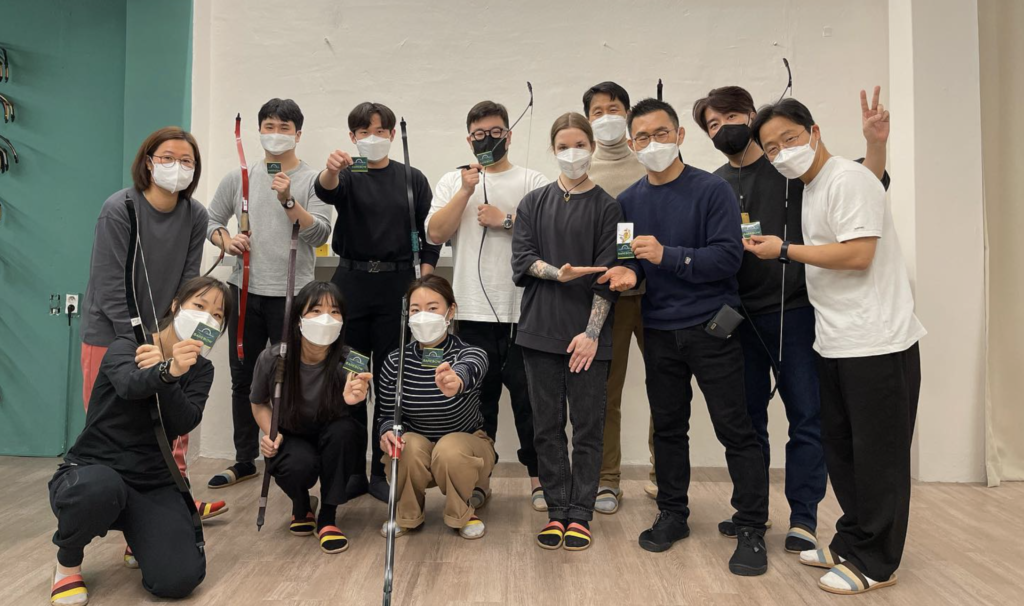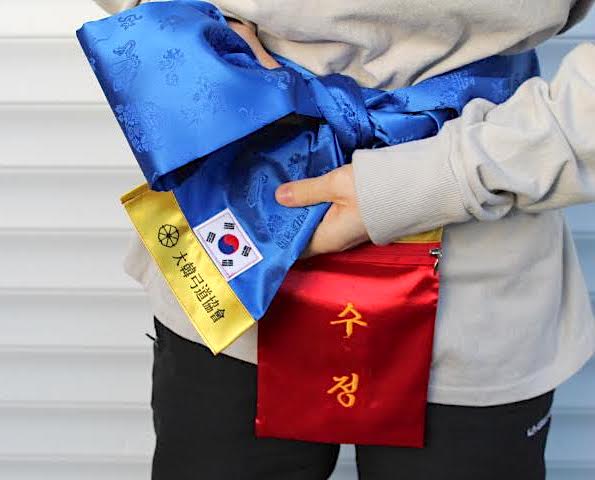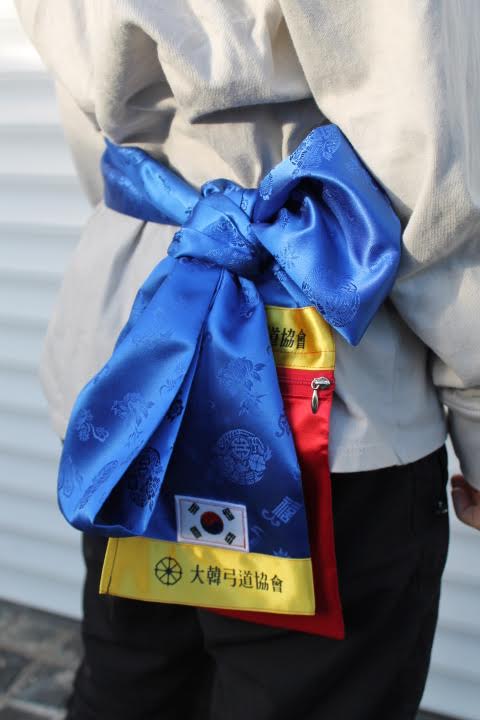Kristina Dolgilevica, one of the foremost Western practitioners of Korean traditional archery, returned to Korea at the end of 2021 – to teach and be taught.
It has been two years since my last trip to South Korea, and two years of drills with my Korean traditional bow, designed for shooting 145m. The thought of standing and raising my bow on Ujangsan Mountain again was the motivation and an active part of my visualisation process: my ‘forever’ happy place.
As soon as I got the green light to fly, I was off to the land of the hazy sun. Ten productive days in a quarantine hotel flew by. I could not bring my bow with me this time, but my coach and dear friend Kim Hyung Tak (Coach Kim) kindly arranged for my new 45lb bow and arrows – the latest, exclusive Korean-style Easton set – to be delivered to Gonghangjung archery clubhouse in time for my arrival.
Back in Black
On my arrival to Gonghangjung I was met by many familiar faces, one of whom gave me my new bow. I was the happiest archer in the world, finally shooting at 145m again. Drills pay off – I have hit that target plenty in my mind. Coach Kim, who lives in a province a few hours away from Seoul, travelled down to catch up, check my form progress and to ensure the equipment worked fine.
The most important event for me as an archer was the official acceptance and induction into the Korean traditional clubhouse (Gonghangjung) that day. Coach Kim himself started shooting there, became a Master (Dan 5) and now acted as my guarantor, signing the papers vouching for my competence and character. He also gave me my Korean name – Sujeong (수정).
These names typically reflect a person’s quality and are usually connected to nature or a geographic location the archer comes from. Mine means ‘crystal’ (rock) and refers to my qualities, ‘rock hard and crystal clear’, and also, apparently, because I ‘shine’. I cannot argue with that logic.
I feel the happiest and strongest when shooting Korean traditional archery (KTA) – even more so when I compete against the masters. I have accomplished the goal I have been working towards for the past five years: to be the first non-Korean female to have been inducted into a Korean traditional clubhouse.
The next step was achieving my first ‘dan’ ranking. I was fortunate that one of the annual grading competitions took place in Seoul, at my club, at the end of November. There are multiple grading events throughout the year that take place in different locations on a rotational basis, so the archers must travel to different provinces to experience different shooting environments and ranges.
Archers typically travel a few days before the event to get a bit of practice in and reconnect with old friends. Though I was not allowed to take part this time, due to short notice, I was kindly invited by the club’s president to observe the event – the only spectator allowed in.
Shooting with the Koreans
I got a great opportunity to shoot with many different archers of all levels, meeting my friends from all over the country. Due to the high volume of archers at these official grading competitions, they are usually separated into blocks; for example, Dan 1-4 in one event and Dan 5-9 in the other.
I was watching the earlier dans, and out of several hundred archers only three got their dan this time. One got Dan 4, and two got their first dan. Getting the first dan is very tough as the archer must hit the target 23 out of 45 arrows at 145m. In my average daily practice, I would hit 18 out of 45.
One round consists of nine ends of five arrows (45), with archers shooting one arrow after another in order until all five arrows are shot. So, on average, I would hit two out of five on target; on one occasion, when shooting against the club’s president, I hit three consecutive arrows, winning the game. I do love a competition.
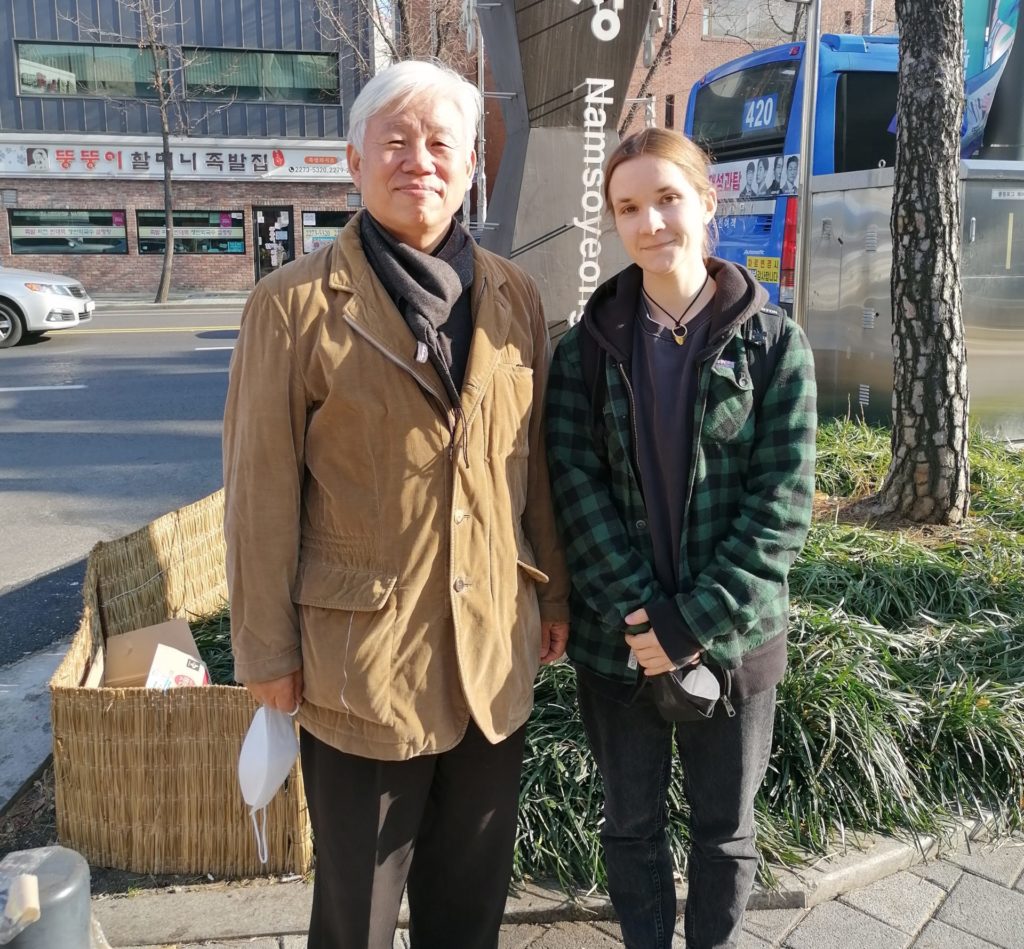
I am presently researching performance anxiety and the behaviour of archers on the line, so it was particularly interesting for me to make my observations this time. In my previous trips I shot at much less populated ranges, and often alone, focusing on my basic form.
This time my primary technical focus was on tempo, breathing and aiming. Due to my drill practice, my draw length has fully developed and now measures 30.5in – an extra inch since last time. I have gained a good level of proficiency and was able to spend more time watching the archers en masse on this occasion. Not many KTA archers warm up.
As I was the first on the range, I would come in and go through my usual 30-minute mobility routine, other archers slowly gathering and observing. Koreans, and especially their seniors, are very active, so they approved of my warm-ups. By the end of the first week, I had a group of followers joining me, their ages ranging from 50 to 86.
Many archers put their head down as if in shame when they do not hit the target. Many older archers have a habit of talking negatively, or scolding the target, which is very funny to observe. Though my Korean is not that good yet, I did make out a few remarks, with some of those referring to one’s inability to focus.
It was rather unusual to hear so much talking on the line as, generally, the rule is only to talk if you are giving instruction to a student. Many archers there remarked on my unusual physical strength and stamina, and admired my archery form and posture.
I would hear “Strong woman! Russian!”, “Practice so good, very strong mind when don’t hit target”. I must admit, I was a little flattered. I was quickly entrusted with the duty of opening the clubhouse and was given my own locker, which read ‘Sujong’ – a true sign of belonging.
Fortunately, on this occasion, I got a chance to practice under some tricky wind conditions. When you shoot at a traditional range, there is a little house set up beside the targets with a red flag attached that the operator inside waves, signalling the arrow’s landing position. As well as telling you where your arrow went, that same person collects all the arrows and sends them over on a zip line back to the range.
That person is usually a senior lady, who is not an archer, and she is referred to as ‘Hajima’. The sweet Hajima is there almost every day from 9.00 until 11.30, but after her departure you have to walk over and collect your arrows yourself.
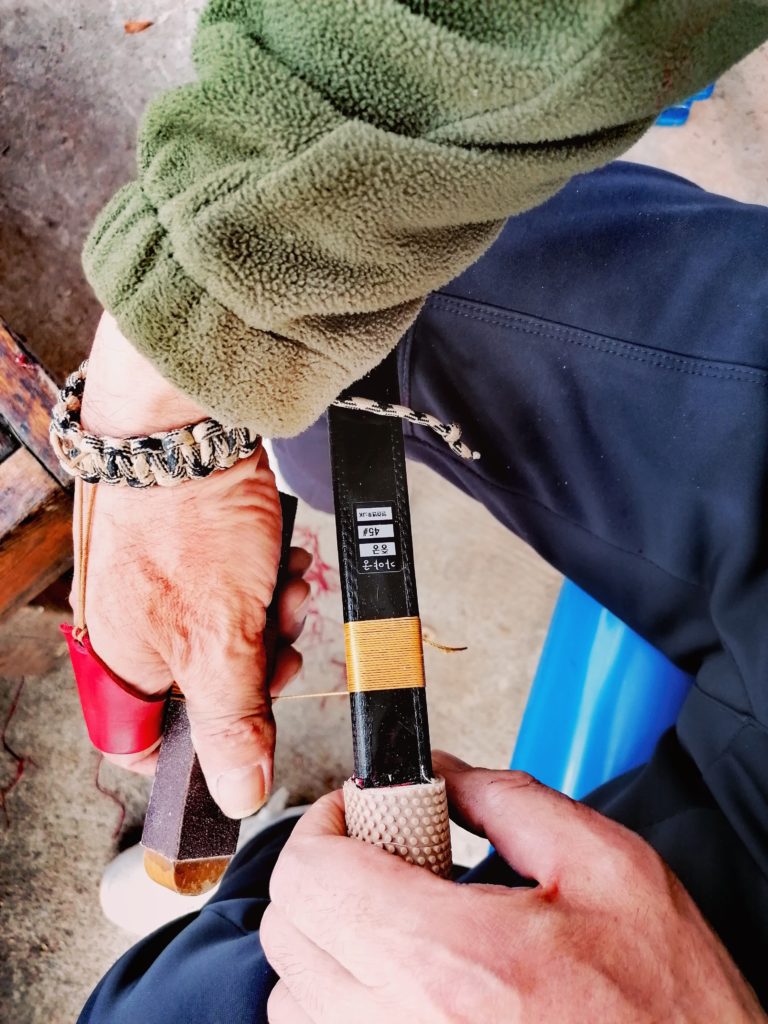
To help you see where your arrows went without that flag waving the direction, other archers will tell you whether your ‘han’ (vertical line) was short or long, or whether your ‘tong’ (horizontal line) was left or right.
Most of my target misses were due to a long ‘han’ of around 160m or an overshoot, but such misses always make me happy because they indicate that the shot is strong and that alignment and release are good. This is the only style of target archery where you are happy to miss.
Who doesn’t know Ki Bo Bae?
One of the highlights on this trip was the invitation to run one of my archery clinics at a traditional archery club in the Mapo district of Seoul.
It became clear that most traditional archers in Korea have never held a modern Olympic recurve, do not think much of it in general, and often smirk at the mention of the short baby-distance of 70m, and the use of all the ‘cheating’ devices attached to the bow.
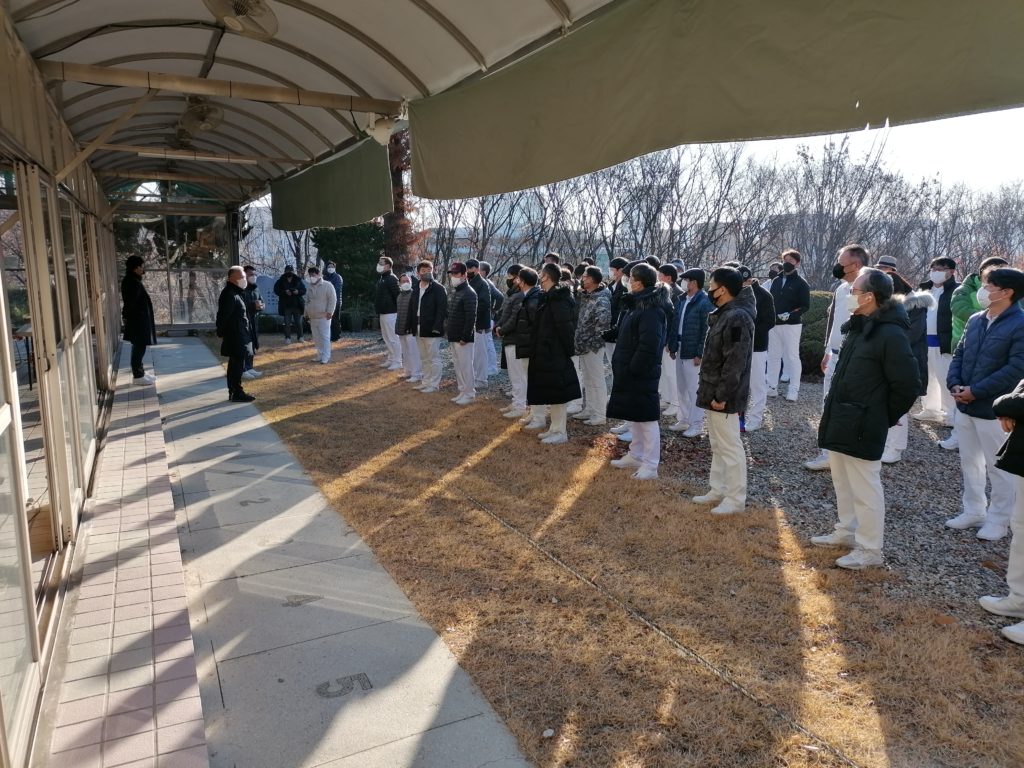
With that in mind, armed with my wonderful translator, Tony Oh, I decided that nothing would be more fitting than giving an extensive interactive lecture in defence of modern shooting styles, their technique and equipment.
Ironically, I started off by introducing the group to the recurve technique of Ki Bo Bae (yes, they did not know her), moving on to compound and the slow-motion videos of Mike Schloesser, and finally moving into the world of barebow and para archery.
The group was genuinely surprised to discover how vibrant the archery scene was outside Korea and how technically intricate each discipline was. However, the biggest revelation for them was the barebow, as none of the archers had ever seen one, thinking that the word ‘barebow’ refers to a simple longbow, a bow bare of accoutrements. Even though, technically, KTA archers facewalk, they were mesmerised by the science of this method applied to the modern bow, as well as the crazy world of stringwalking.
The second half of the event consisted of one of my killer mobility routines that “make grown men cry”, with some archers remarking that I must be a member of the special forces, a robot or the Terminator. We finished off with some fun shooting games.
Knowing how much the Koreans love the latest Joker film (they all do, just ask), I decided to introduce them to archery poker, giving out a special Joker card to the winner. The group tried so hard, were so engaged, disciplined and above all respectful. A delight and an honour to work with. So yes, ‘I’ll be back’.
Until next time
On my final day, I bought a tonne of rice cakes and fruit to say my farewells at the clubhouse and have my final practice. So many people came, shot, ate, drank tea and expressed how much they admired my passion, discipline, and respect towards the practice.
The members got together and presented me with the official silk patterned association belt with the club’s and my Korean names embroidered on it. It was their way of saying that I will forever be welcome at Gonghangjung. I felt I had really achieved something, and was very touched by the sentiment. Work hard, stay true to what you know is good and turn your dreams into goals – anything is achievable. See you soon, Korea!


